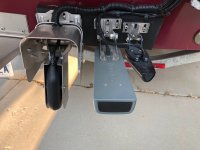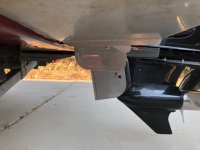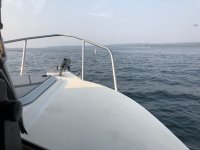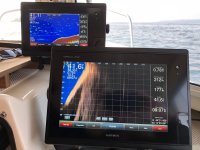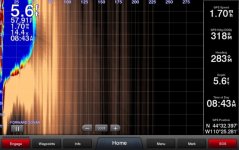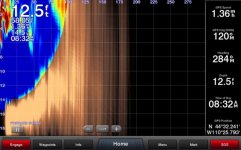jkidd
Active member
- Joined
- Oct 23, 2006
- Messages
- 1,681
- Reaction score
- 5
- C Dory Year
- 2007
- C Dory Model
- 22 Cruiser
- Hull Identification Number
- CDo22670C707
- Vessel Name
- Voyager
I mounted a Garmin PS21 Sonar on Voyager a couple of weeks ago and just got back from Yellowstone with some results. I spend quite a bit of time at Lake Powell some times by myself 50 miles from the marina in the middle of winter and I feel that the $750 is more than justified for my safety. While it is not perfect the results were what I expected. Below 8 miles an hour it would draw the bottom and show hazards in front of me. At 9 to 10 miles per hour the transducer would stop showing the bottom. I lost 1 to 2 MPH on the top end but didn't feel it pulling to one side I'll know better about the top speed at Lake Powell in Sept. There was no rooster tail. Here are some photos.
